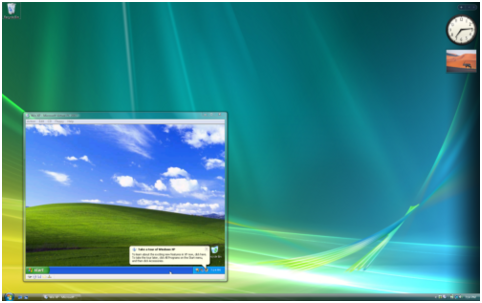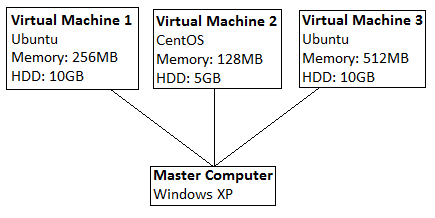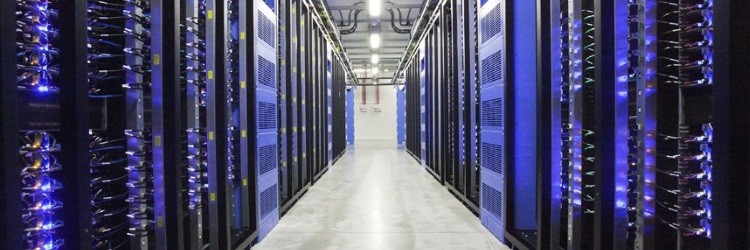What is a VM (virtual machine) or VPS (virtual private server)
I’m going to talk about virtual machines (VM) before I go onto virtual private servers (vps), to understand what a vps is you need to understand what a vm is as they are very similar (practically the same thing). A VM is a virtualized (virtual) operating system running inside a master operating system, for example we have a physical computer running windows XP this is known as the master, we install virtualization software which allows us to create virtual computers inside the master, multiple virtual machines can be installed on a single master.
Running a virtual machine from home is a very easy task, you can download software for various operating systems and they usually come with a GUI (graphical user interface) allowing easy management and configuration, you can view my guide for setting up a virtual machine using VirtualBox. The image above shows a master running Windows Vista operating system and one slave (VM) running Windows XP. The resources of the master computer are shared between the master and slaves, for example each VM can be assigned a specific amount of memory, disk space and processing power, below is an image showing a master running windows XP and 3 slave computers each with a specific amount of resources.
The image above shows a master running Windows Vista operating system and one slave (VM) running Windows XP. The resources of the master computer are shared between the master and slaves, for example each VM can be assigned a specific amount of memory, disk space and processing power, below is an image showing a master running windows XP and 3 slave computers each with a specific amount of resources.
 If you wish to practice, experiment or use visualization technology I have written a post explaining how to install, use, configure VirtualBox and install an operating system which can be found here.
If you wish to practice, experiment or use visualization technology I have written a post explaining how to install, use, configure VirtualBox and install an operating system which can be found here.
What is a VPS
A VPS (virtual private server) is basically the same as a VM with the same limitations such as resources are shared between the master and slaves. A VPS tends to run server operating systems and dedicated server tasks for example hosting a website. Its a cheap way of purchasing a server or many servers without having to deal with any of the hardware / data center rental charges. VPS providers tend to be using server grade hardware and hosted in high capacity data centers which are able to coupe with the bandwidth requirements a server would require whilst also providing high availability.
Lets take the following example. We want to host a simple website. We only need 1GB of memory so we have the option of a VPS for only £20 per month, or we can purchase a physical server which will cost us in the region of £70 per month (this is not including the price to purchase the hardware and the time to maintain that hardware).
